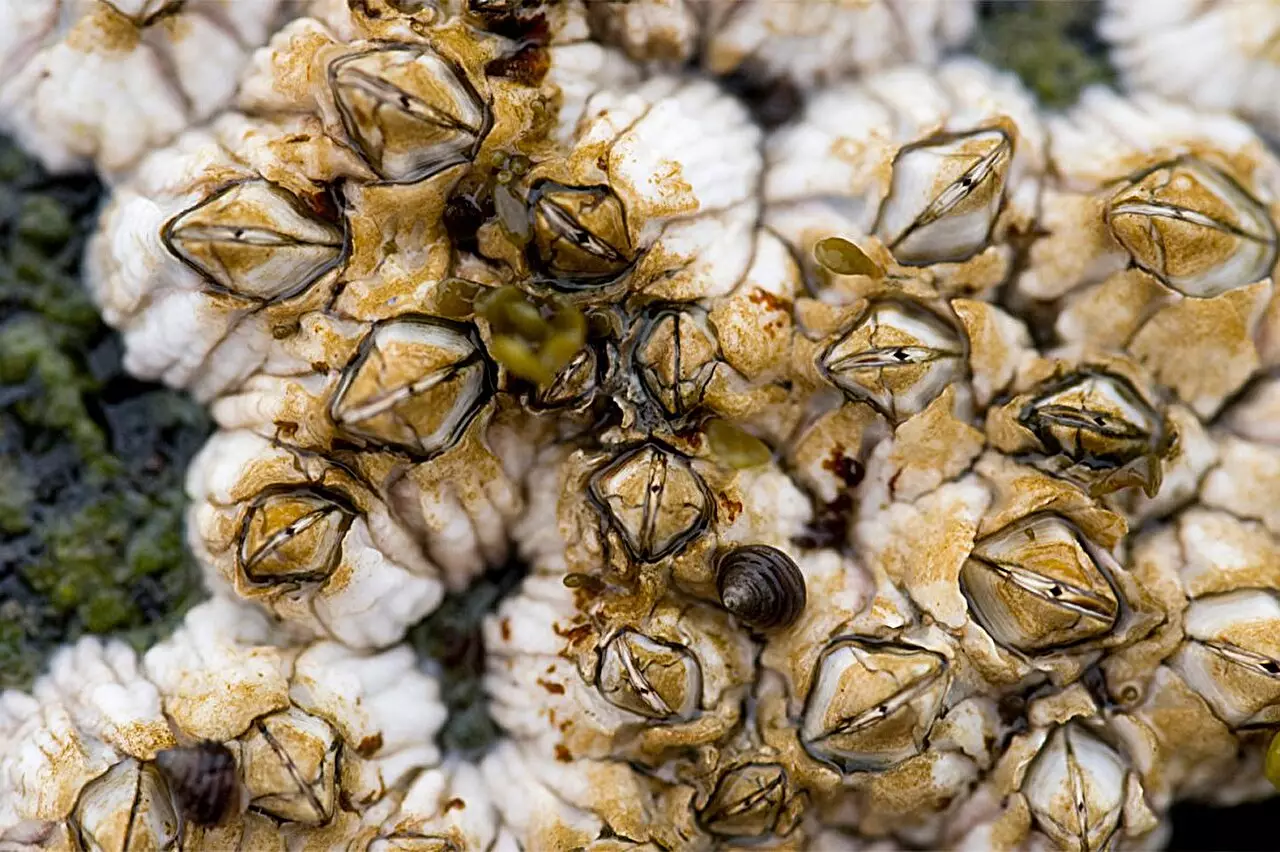Biofilms pose a substantial challenge in the medical and industrial fields, representing communities of microorganisms — including bacteria and fungi — that adhere to surfaces and embed themselves within a protective matrix. They commonly form on both natural and artificial surfaces, complicating hygiene and treatment efforts. An alarming statistic reveals that 60% to 80% of chronic wounds harbor biofilms, largely composed of dormant bacteria that are resistant to standard antibiotic treatments. Thus, understanding and combating these biofilms has become a focal point for recent scientific inquiry.
The Barnacle Inspiration: A Breakthrough in Research
The research led by Professor Abraham Joy at Northeastern University’s Department of Bioengineering offers a groundbreaking perspective by drawing inspiration from barnacles, which use natural chemicals to prepare surfaces for their adhesive secretions. Joy’s team has developed a synthetic polymer with excellent adherence on wet surfaces. The question arose — could this polymer be utilized to dislodge bacterial communities from various surfaces, including human tissue and industrial piping?
Joy’s lab tested this hypothesis, revealing promising results. The polymer demonstrated remarkable abilities to disperse bacterial biofilms, particularly targeting *Pseudomonas aeruginosa*, a notorious pathogen known for its contribution to antibiotic-resistant infections. The revelations from their research, published in the Journal of the American Chemical Society, could transform how we perceive and tackle bacterial infections.
Joy emphasizes a paradigm shift in antibiotic design. Rather than focusing solely on eradicating bacteria, his research prioritizes disrupting the biofilm structures that harbor them. Imagine biofilms as houses and the bacteria as inhabitants; instead of attempting to forcefully remove the residents or destroy their living spaces, the aim is to weaken the very structures that support their existence. By targeting the scaffolding that holds biofilms intact, it becomes possible to expose dormant bacteria, allowing conventional antibiotics to become effective against them.
In the clinical realm, this methodology might particularly benefit patients with chronic wounds, where biofilms create significant hurdles to recovery. By applying the polymer in liquid form, there exists the potential to clear these damage-inducing biofilms and reinstate the functionality of traditional antibiotics.
Expanding the implications of this research extends beyond medicine. Industrial sectors, including water treatment and the pharmaceutical industry, could benefit from methods to clear biofilms from pipes and medical devices, ultimately reducing contamination risks. The versatility of this polymer could facilitate cleaner operational environments across various settings, while providing a more sustainable alternative to harmful chemical agents.
While initial findings demonstrate the polymer’s effectiveness against *Pseudomonas aeruginosa*, Joy’s team noted limitations with other bacteria such as Staphylococcus aureus and E. coli. This discrepancy arises from the distinct compositions of the biofilms formed by different bacterial species, as some contain a higher proportion of carbohydrates while others boast more protein-based architectures.
Future Directions: Tailoring Polymers for Specific Applications
Understanding the interactions between the polymer and the biofilm matrix is paramount as Joy and his colleagues continue to investigate this field. One of the research goals is to manipulate the polymer composition to enhance its efficacy against a broader range of biofilms. By identifying specific interactions between the polymer and the unique elements of diverse biofilms, researchers hope to design tailored polymers that could effectively target particular types of bacteria.
Joy analogizes this endeavor to maintaining grass on a lawn — the polymer must possess the right physical properties to loosen and remove the biofilm without being too viscous or too diluted. Balanced hydrophobic and hydrophilic attributes will dictate whether the polymer adequately interacts with the biofilm or simply washes away.
As this innovative research unfolds, the potential to revolutionize our approach towards bacterial infections and biofilm management appears significant. By fostering dialogue on the intersection of bioengineering and medicine, Joy’s work acts as a catalyst for developing new methodologies that align with the physical properties of biofilms.
Ultimately, the ambition of this research is not merely to eliminate harmful bacteria but to create a toolkit that offers versatile, non-invasive solutions to biofilm-related challenges across various applications, setting the stage for a future where biocompatibility and adaptability are prioritized in infection management and prevention strategies.


Leave a Reply